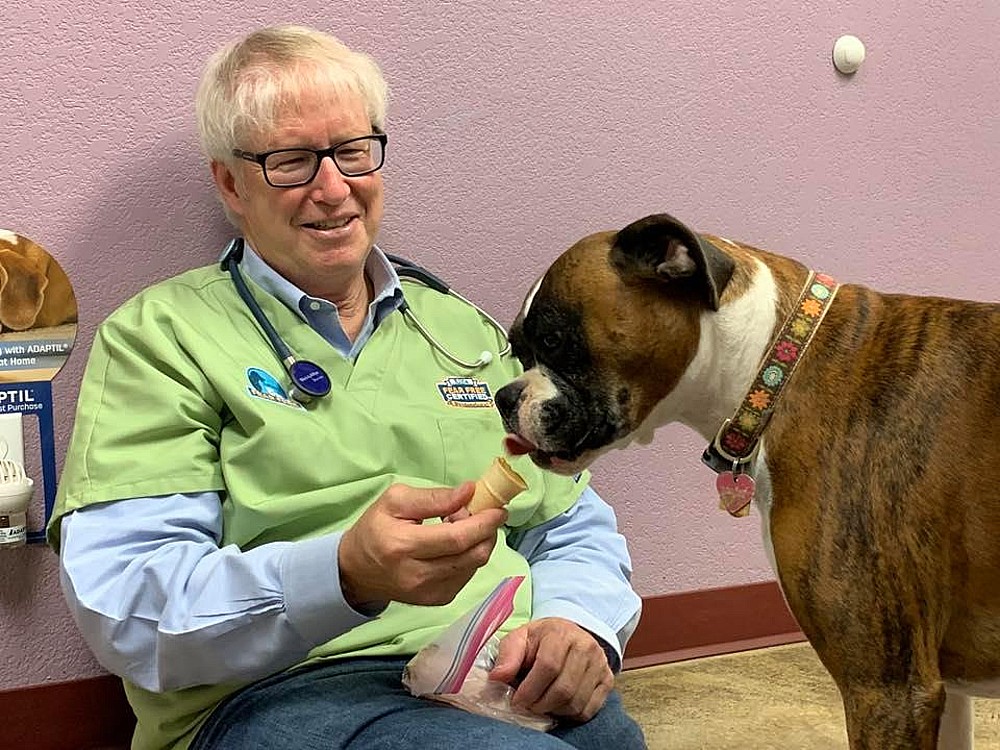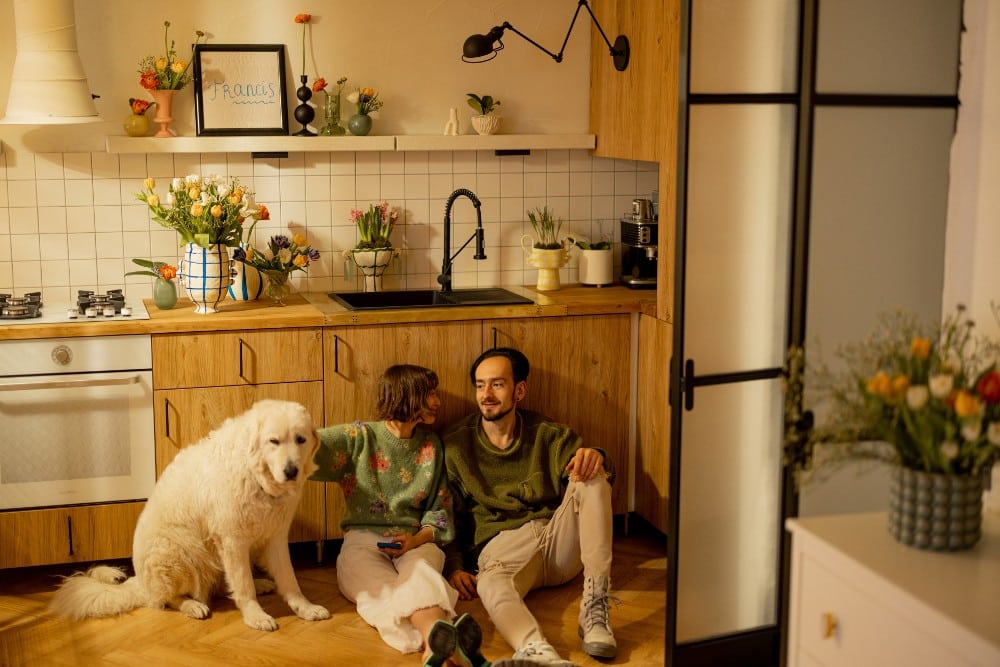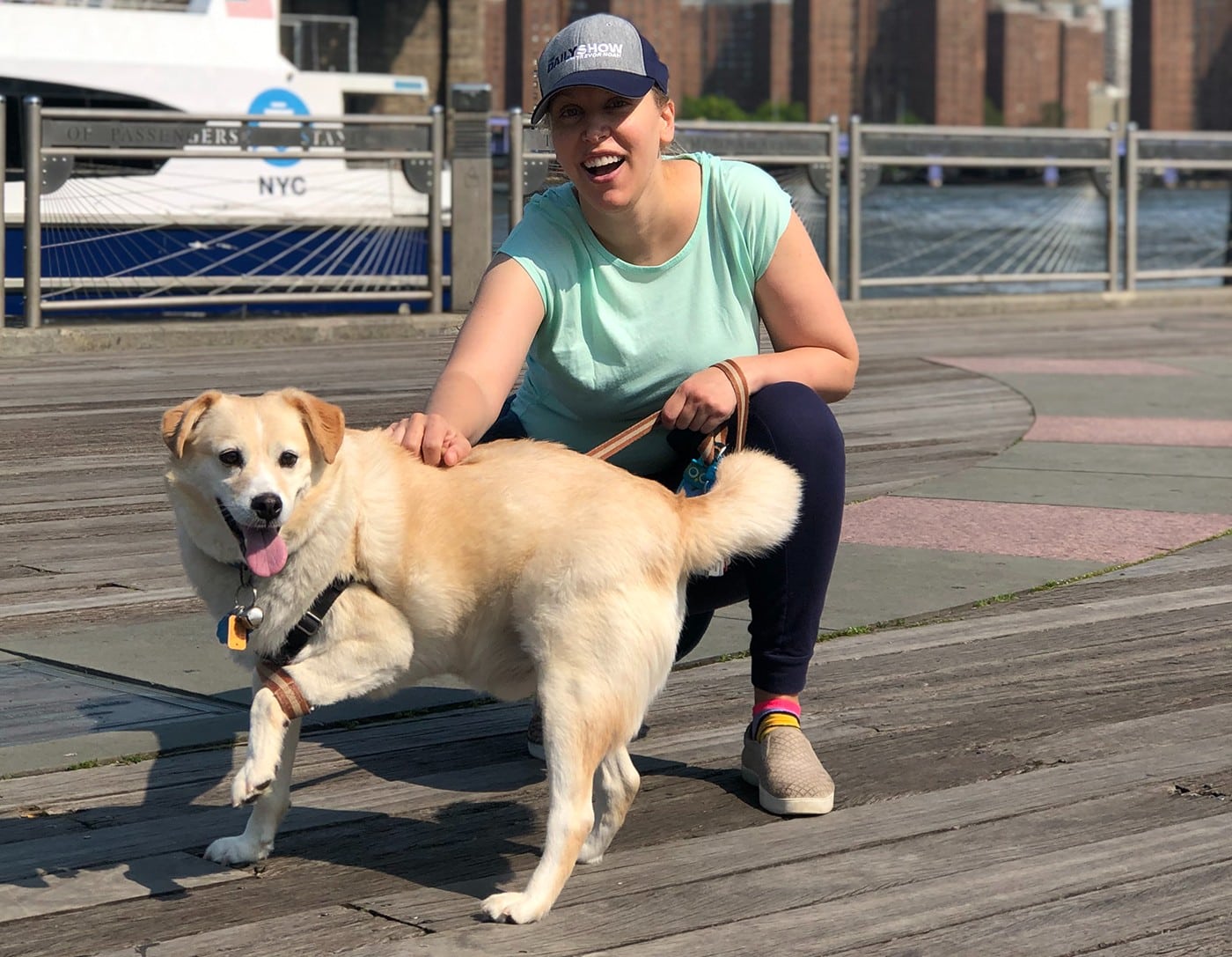As you’re turning your car into the parking lot of your local veterinary practice, does your dog hunker down in the back seat in fear? Do you have to literally drag or carry your trembling pup through the front doors and into the waiting room, just to have him try to bolt out the exit? Does he cower, lick his lips, or curl his body into a crescent while you wait for your turn to be seen?
There is a good reason behind his behavior. The vet is a place that your dog has long associated with fear and pain. Outside the vet clinic, your dog can smell feces that is littered with fear pheromones. Inside, the waiting room is full of loud noises and nervous animals. Once your pet enters the exam room, his experience only gets worse. He gets hoisted up onto a cold, slippery surface and has to make direct eye contact with strangers. The vet then pokes and prods your very uncomfortable dog. The end result: a terrified dog who never wants to go back to the vet’s office.
Related: The Top 6 Dog Parenting Mistakes, According to a Veterinarian

But a relatively new approach is hoping to make the experience less scary. The Fear Free initiative is a veterinary-care approach designed to cater to both the physical health and emotional wellbeing of your pet. Using a variety of methods to make a visit to the vet more pleasant, the program was launched in 2016 by Dr. Marty Becker, a veteran in the space.
The former resident veterinary contributor on Good Morning America for more than 17 years and the author of three New York Times best-selling books, Dr. Becker wants to make vet experience a more enjoyable one for all involved.
An Innovative Initiative
“The Fear Free initiative was born in an instant, took five years to develop, and was an overnight success,” Dr. Becker said.
During a veterinary conference in Canada, Dr. Becker listened to veterinary behaviorist, Karen Overall, give a moving speech about fear in veterinary medicine that changed him forever. She discussed how fear is the worst emotion any species could ever experience and how it causes long-term damage. And indeed, it can. Research has shown that a traumatic experience can dramatically affect both a pet’s mental and physical health.
“After that, I never wanted to practice veterinary care the same way again,” Dr. Becker stated. Soon after, he began to develop the Fear Free program.
A Different Approach
The Fear Free Initiative takes a different approach to veterinary care.
“Instead of many vet hospitals where the owner drags the dog in, the dog drags the owner into a Fear Free clinic,” Dr. Becker said.
Dog parents are part of the experience. A Fear Free certified veterinary practice fully educates humans on how to deliver a calm, cool, and collected pet. This entails steps to take before the visit, including:
- Leaving plenty of time to get to the appointment to avoid feeling rushed or stressed
- Remaining in your car until your appointment
- Cooling or warming the car to a comfortable temperature
- Playing calming music during the ride
- Using calming pheromones or scents, such as lavender, inside of the car
- Allowing your dog to go into his carrier or crate on his own
What’s a Fear Free Vet Appointment Like?
The first few minutes matter. Once it’s your turn to be seen, you and your pup will be greeted by a pet concierge in the office who will immediately start giving your dog treats as a way to create a positive association with the visit. This person greets your dog while turned sideways to avoid direct eye contact and then squats down to make themselves really small to keep your pet feeling completely serene.
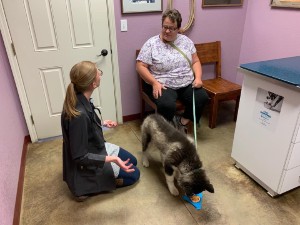
In the exam room, calming pheromones and serene music are used to create a tranquil setting. Your dog will not have to sit on a cold, slippery table. Instead, a yoga mat or warm, pheromone-infused towel is used. All team members will avoid making direct eye contact with your dog to avoid making him feel stressed until he gets acclimated to his new environment. Throughout the entire visit, the vet will offer your dog delicious treats to distract him from procedures that can be stressful.
For instance, vaccines are pre-drawn and placed on the counter covered by a surgery towel that has been sprayed with calming pheromones. While receiving the shot, your pooch will get to lick his own name written in flavored paste off of what looks like a charcuterie board.
In addition to yummy tidbits, the veterinary staff will also use toys and other distraction techniques to help your dog feel as comfortable as possible. They will also perform all of the exams and procedures in your presence, asking you to assist as needed.
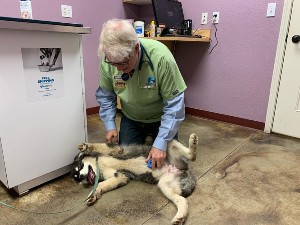
Related: What Do those Letters After Your Veterinarian’s Name Actually Mean?
If your pet is really nervous and none of the other calming techniques are working, the vet will prescribe anti-anxiety or calming supplements to help make the entire visit as seamless as possible for you and your pet.
After the visit, you can expect one happy and calm dog.
What’s Next for the Fear Free Initiative
Today, there are more than 100,000 Fear Free certified individuals, which can be found on the website’s directory. Moreover, 22 veterinary schools require Fear Free certification of all students prior to graduation.
An entire veterinary practice can become Fear Free certified, including the veterinarians, veterinary nurses, and technicians. To do so, pet care professionals must successfully complete an online training program that is valid for three years. The training includes eight different online modules, focused on how to make the veterinary experience less stressful for animals.
The future holds no limits for the Fear Free Initiative. Dr. Becker plans to introduce the program to veterinary practices that work with farm animals.
“We all took an oath to relieve animal pain and suffering. Once you have the awareness that you’ve been causing fear, there’s shame and guilt, but luckily there is also a path forward,” Dr. Becker said.













